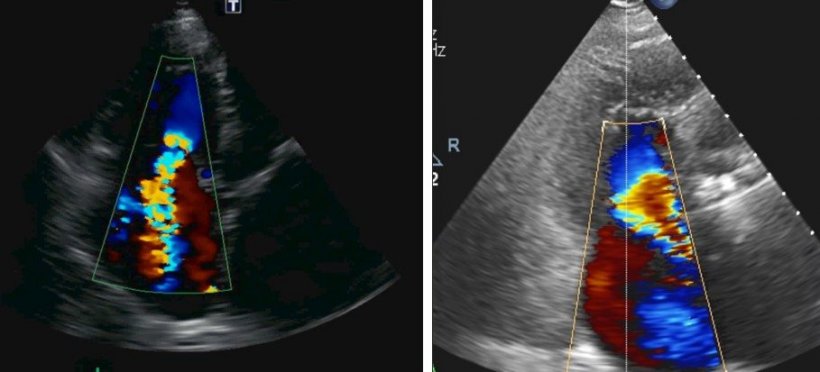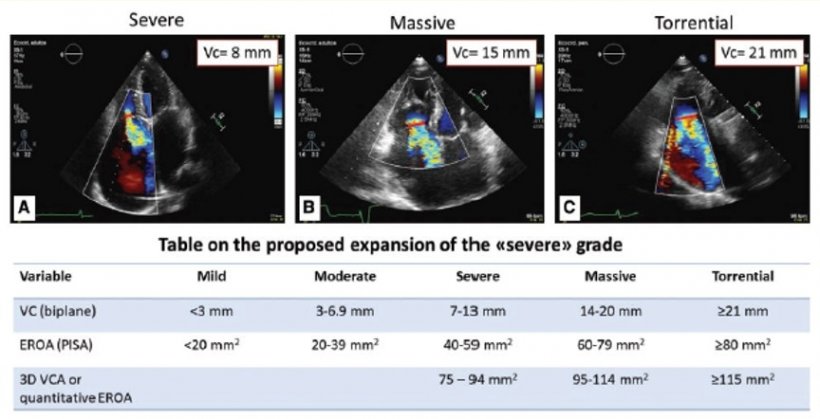
Article • Tricuspid insufficiency
Healing the heart’s right chambers
Most people think their heart is located on the left side of their chest, and this is also the direction science has looked, so far. However, just as the heart sits at the centre of the chest, disease also affects the right side of the organ.
Report: Mélisande Rouger
Cardiologists must now look right to improve patient prognosis, according to Professor José Luis Zamorano, Vice President of the European Society of Cardiology, who will show at ESC 2019, how new classification can help patients suffering from disease affecting those neglected chambers located to the right side.

The heart has four chambers: two ventricles – one to the left, one right and two atria – also located to the left and right. Most studies have focused on the aortic and mitral valves, both located to the left of the heart, and hence the most documented valvular diseases are those related to these chambers. However, the tricuspid and pulmonary valves, on the right side, can also suffer illness. This means cardiologists need to be able to offer alternative therapies to those currently available, according to José Luis Zamorano.
In his presentation, Zamorano will discuss tricuspid insufficiency (TI) or tricuspid regurgitation, in which the tricuspid valve, which is located between the right atrium and right ventricle,does not close completely when the right ventricle contracts during systole. ‘Tricuspid insufficiency is important because of its prognostic factor. The patient suffering significantly or severely from TI is at greater risk of death, or being hospitalized, or suffering heart attacks,’ he explains. ‘There’s a higher mortality and higher morbidity.’
There is a new classification of TI and new mortality data. A couple of years ago, Zamorano and his research group at Ramón y Cajal Hospital, a leading institution in Madrid, published a new classification of this illness with five gradings – mild, moderate, severe, massive and torrential.

This year, in the European Journal of Cardiovascular Imaging, the Spanish researchers released a new study in which they found that patients with massive or torrential levels of tricuspid insufficiency had greater mortality rates than even those with severe levels. ‘This is our newest finding: greater mortality rates are associated with severe and torrential tricuspid insufficiency,’ he says. ‘This information will help practitioners treat patients better.’
Once the medical team has prognostic implications and the means to classify disease, they can get to treatment. New devices are emerging that offer innovative ways of treating tricuspid regurgitation through percutaneous procedures, without the need for surgery or extracorporeal circulation. Six or seven such new tools have just been installed at Ramón y Cajal this summer, including Cardioband for the first time in Spain. ‘With the prognosis that greater tricuspid insufficiency means greater mortality and so many new technologies with which to approach treatment, patients can now be treated better than ever,’ Zamorano says.
Treatments are typically long-standing and based on diuretics, with medicines and pills. Some other patients, who are already going to be operated on for other valvular heart diseases of the left side, for example, the mitral valve, can have their problems with the right side fixed at the same time by the surgeon. Patients who are at higher surgical risk can now benefit from these new percutaneous methods, without the need to open the patient’s thorax or extracorporeal circulation.
Profile:
Professor José Luis Zamorano is head of the cardiology department at Ramón y Cajal Hospital, Madrid, Spain, and Vice President of the European Society of Cardiology. He is Doctor Honoris Causa at Cuyo University, Argentina, and Professor of Medicine at Alcalá University in Madrid. He is also National President of the RDI for cardiovascular research at Carlos III Health Institute in Madrid.
31.08.2019










